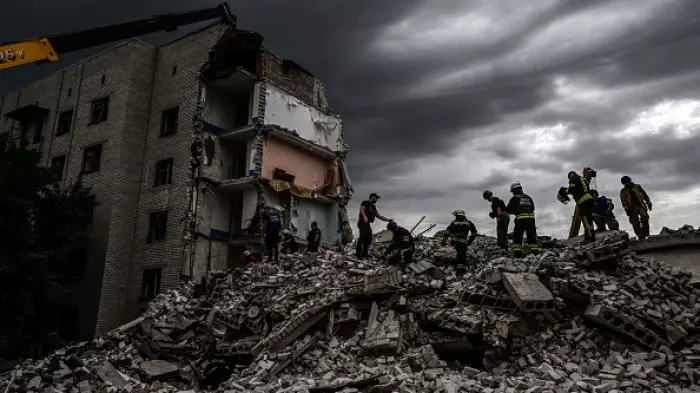The Pae Ora (Healthy Futures) Act 2022 was supposed to be based on the principles of Heather Simpson's review of the 2020 health and disability system.
But, in fact, the new act is different from the review’s principles in critical ways, which explains some of the dysfunction we're seeing in New Zealand's health system.
One area where this is now obvious is the entities called "localities".
The Simpson review proposed setting up localities to cover what it called tier 1 health – primary (largely general practice), community and home-based care.
Localities would be “a geographically defined area with a population of between 20,000 and 100,000 people”. They could be aligned with council, iwi or natural boundaries.
They were to be resourced by the district health boards responsible for the health of geographically defined populations.
Each DHB would have a strategic plan based on its population’s health needs, which would include locality arrangements.
Localities were to make sure health services reflected community characteristics, cultural safety and improved accessibility.
They would develop their own "locality plans" including finding and addressing unmet health needs.
The relationship between localities and their authority was to be horizontal (and relational) rather than vertical (and non-relational).
There were already localities in some DHBs before the Simpson review. Counties Manukau DHB was the first.
But what inspired the review was more recent work in MidCentral DHB (Manawatū and Horowhenua), where four localities were being developed.
MidCentral was used by the review as a shining example of how localities could work. After the review was released, other DHBs started work in that area.
Capital & Coast DHB (Wellington), for example, had identified rough boundaries for four localities.
Plan had potential ... but
I had mixed views on the Simpson review but I always considered localities to be a positive initiative with a lot of potential.
They could better enhance their DHBs' understanding of the health of these even more geographically defined populations. Further, there was an opportunity to put this into action through "locality plans".
Labour went into the 2020 election saying that it would put in place the principles of the Simpson review. Having DHB-supported and resourced localities was one of its main principles.
However, in April 2021, this went out the window.
Health minister Andrew Little announced that the government would abolish DHBs. This decision was made in private without any public signalling or consultation.
Instead, the 20 DHBs would be rolled into ‘one big vertical DHB’ called Te Whatu Ora (Health New Zealand).
Under the Simpson review, localities were to be networking bodies supported by and working horizontally with their local DHB. Now they had to work in a highly centralised vertical structure. This has proven to be a gamechanger – for the worse.
There are to be around 80 geographically based localities. This suggests an average population size of over 60,000, with some variations.
Localities were to be up and running by July 2024. However, Te Whatu Ora is well behind this timeframe. Only 12 localities have so far been approved.
A revised timeframe was reported earlier this year. Only the boundaries would be resolved by this timeframe (and possibly only provisionally). Now, it appears that this revision has been pushed out a further year to July 2025.
Meanwhile, those working in community healthcare have been frustrated in their attempts to find useful information about how these localities will work. This even includes some of the 12 already approved localities.
Behind the chaos
There are several reasons for this chaos.
One is the failure of government to address the severe workforce shortages in the health system. This is largely due to it being distracted by restructuring at the expense of focusing on the fatigue and burnout caused by these shortages.
Another was the failure of the business consultant-led Transition Unit to do the work necessary to allow Te Whatu Ora to hit the ground running in July last year.
These two reasons were beyond the control of the new organisation.
But Te Whatu Ora has made the situation worse.
It embarked on a major internal restructuring of its non-clinical roles and made it even worse by having a poor pre-determining process.
Four units have been chosen for the first set of restructuring. One is "commissioning" (broadly speaking, funding and planning). Localities are central to the work of the commissioning.
Commissioning is the hardest-hit, with 530 positions to be disestablished by early June. These are largely positions at a district level.
There are 81 new positions (mainly centralised), leaving a net loss of 430. Major downsizing and centralisation are the outcomes.
Those working in this unit have been distracted by uncertainty over whether they'll still have jobs. The focus on restructuring has also distracted Te Whatu Ora’s leadership from providing leadership over localities.
The ability to progress work on the localities has been severely compromised.
They're threatened by the removal of many positions under the restructuring that are important for their development and effectiveness.
Given that localities are to be in communities, which is where most healthcare is provided, and that they have to know their populations well, I can't see where there would be duplication.
Take the former MidCentral DHB.
Ironically, given its role in inspiring the Simpson review to recommend localities, the entire commissioning team of the MidCentral DHB, including its localities manager, is to be disestablished as part of this restructuring.
It will be a huge loss of directly relevant experience and expertise that the localities need if they're going to be developed into effective health entities.
This loss is being replicated to one degree or another across the other former DHBs.
Over and above the reasons behind the chaos confronting locality development – workforce shortages, failure of the transition unit to prepare the transition and internal restructuring – there's an overriding factor that takes localities from a chaotic to a perilous state.
This factor is the shift of the localities' statutory relationship from horizontal (devolved) to vertical (centralisation).
It means that localities will be disempowered over critical issues such as boundaries, governance and locality plans. I believe this is what puts localities at peril.














